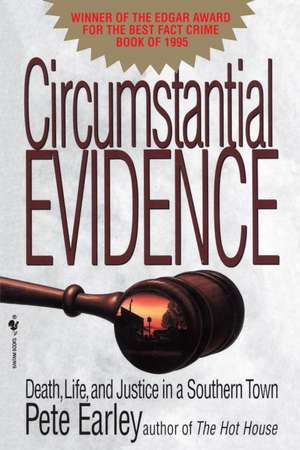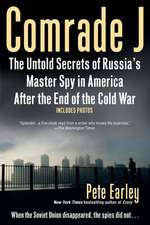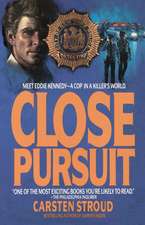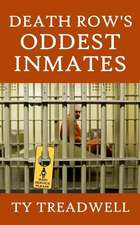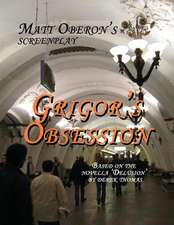Circumstantial Evidence: Death, Life, and Justice in a Southern Town
Autor Pete Earleyen Limba Engleză Paperback – 31 iul 1995
Vezi toate premiile Carte premiată
In Monroeville, Alabama, in the fall of 1986, a pretty junior college student was found murdered in the back of the dry cleaning shop where she worked. Several months later, Walter "Johnny D." McMillian, a black man with no criminal record, was tried, convicted, and sentenced to death for the crime. As McMillian sat in his cell on Alabama's death row, a young black lawyer named Bryan Stevenson took up his own investigation into the murder of Ronda Morrison. Finding a trial tainted by procedural mistakes, conflicting eyewitness accounts, and outright perjury, he was determined to see McMillian go free--even if it took the most unconventional means...
From the Paperback edition.
Preț: 162.40 lei
Nou
Puncte Express: 244
Preț estimativ în valută:
31.08€ • 32.33$ • 25.66£
31.08€ • 32.33$ • 25.66£
Carte disponibilă
Livrare economică 24 martie-07 aprilie
Livrare express 08-14 martie pentru 83.81 lei
Preluare comenzi: 021 569.72.76
Specificații
ISBN-13: 9780553763560
ISBN-10: 0553763563
Pagini: 512
Dimensiuni: 152 x 229 x 29 mm
Greutate: 0.79 kg
Editura: Bantam
ISBN-10: 0553763563
Pagini: 512
Dimensiuni: 152 x 229 x 29 mm
Greutate: 0.79 kg
Editura: Bantam
Extras
Bryan Stevenson turned his Toyota Corolla onto Interstate 65 and pushed down on the accelerator, merging the well-traveled import into the parade of cars hurrying south from Montgomery. It was mid-January 1989, and Stevenson was en route to Holman prison, where he planned to interview three inmates on death row. He had never met any of them. The last name on his list was Walter "Johnny D." McMillian.
Stevenson was not from the Deep South. He had been born and reared in rural Delaware, and he often found life in Alabama depressing. He stayed only because of his work. As a civil rights lawyer who specialized in death row appeals, Stevenson was right where he belonged. More than half of the nation's death row inmates are imprisoned in Alabama, Georgia, Mississippi, Louisiana, Texas, and Florida. Nearly eighty-five percent of all executions take place in those six states. Among attorneys the states are known as the Death Belt. Stevenson was the newly hired director of the Alabama Capital Representation Resource Center, and it was his job to do everything he could to prevent Alabama from executing a single inmate.
Despite its grand-sounding name, the nonprofit Resource Center was a fledgling two-month-old operation based in a Victorian row house not far from the state capitol in Montgomery. The driving force behind the creation of the Center was a no-nonsense white woman in her late twenties named Eva Ansley, who had waged a one-person campaign against the death penalty in Alabama for several years. Ansley was not an attorney, but she was highly respected in Alabama legal circles and despised by death penalty proponents.
In early 1988 Bryan Stevenson heard about Ansley's efforts in Alabama and called to offer his help. Back then he was working for Southern Prisoners' Defense Committee in Atlanta, another nonprofit group opposed to the death penalty. Stevenson agreed to represent Ansley's most hard-pressed clients, and he also began offering other lawyers in Alabama advice on how to file death row appeals. With Stevenson's help, Ansley convinced the Alabama Bar Association that something had to be done to assure the condemned men legal representation up to the point of their execution, and the bar association agreed to help apply for various federal grants. In November 1988 the federal funds started to arrive, the Resource Center was organized, and Stevenson agreed to move to Montgomery temporarily to run it. He and Ansley were now in the process of hiring a staff and unpacking files.
As he drove south Stevenson thought about the three men he planned to meet. With more than a hundred cases to choose from, Stevenson's decision to pick out McMillian's might have seemed odd. There were lots of other prisoners much closer to being executed. But Johnny D.'s case had stuck out. Nearly everyone on death row had a long criminal record. Johnny D. didn't. Nearly everyone on death row had been linked to a murder by fingerprints or some other physical evidence. He hadn't. And few death row inmates had alibis as strong as Johnny D.'s. Why hadn't jurors believed his six alibi witnesses? Stevenson thought he already knew the answer. They were black, and that made them less credible than Ernest Welch, a white man. Part of the reason Stevenson assumed this was that he was black. He knew what it was like not to be taken as seriously in an Alabama courtroom as a white attorney.
At age twenty-eight he was a handsome man, standing just under six feet tall, with cropped hair and a closely trimmed black beard. He was athletically lean. Whenever he appeared in court or visited a prison, he wore a dark suit, the expected uniform of an attorney, but on most days he could be found in worn denim jeans and a faded T-shirt. His choice of dress, like everything he did, was deliberate. He had decided early in his life that he wanted to help poor people, particularly blacks, and he had taken an unspoken vow of poverty. When the Center's newly established board of directors offered him a starting annual salary of $60,000 to direct it, Stevenson turned them down. All he needed, he explained, was $18,000 per year--a wage that undoubtedly made him one of the lowest-paid graduates in the history of the Harvard University Law School.
Stevenson spent longer at Holman prison talking to the first two death row inmates than he had planned. It was after five o'clock when Johnny D. was finally brought into a tiny room in handcuffs. Because he was angry at his lawyers Chestnut and Boynton, Johnny D. viewed Stevenson with suspicion and did not say much. Stevenson expected this. He had seen it before. So he began by explaining how the appeals process worked and what he could and couldn't do as an attorney. Stevenson knew that lawyers often considered it a waste of time to discuss the process with their clients. They simply told them they would take care of the legalities. But when all that was preventing a man from being strapped into Yellow Mama was the law, even the slowest and most uneducated inmate suddenly found his interest in procedures and legal statutes sparked.
Johnny D.'s case would automatically be reviewed by the Alabama Court of Criminal Appeals and the Alabama Supreme Court, Stevenson told him, but both courts would look only for procedural errors. If they decided for example, that Judge Key had made a serious mistake during the trial, then the justices would order the state to give him a new trial. That usually did not happen, however, Stevenson warned. More than likely the courts would rule that Johnny D. had received a fair trial. At that point an execution date would be scheduled and the clock would begin ticking. The state would pay Chestnut and Boynton to represent Johnny D. up until then. During the postconviction relief stage, however, it would pay only $600 to his attorneys regardless of how much work they did. This was when most lawyers quit. It was also when new evidence could be introduced and new legal issues raised. "If you want the Center to take over as your legal counsel," Stevenson continued, "We will investigate this case from scratch." The Resource Center had hired its own full-time investigator, and that detective would be sent to Monroeville to interview witnesses and gather evidence.
"Would your investigator find them two FBI men?" Johnny D. asked.
"Our investigator will certainly try."
That was all Johnny D. needed to hear. He agreed to terminate Chestnut and Boynton as his attorneys and hire the Resource Center. Now that Johnny D. was formally his client, Stevenson moved to the next stage of his standard speech. "I am going to do everything I can save your life," he said. "It doesn't matter to me whether a person has killed nine hundred thousand people or one person or if a person has never killed anyone. The objective is still the same. I don't want to see you executed." Stevenson always told death row clients this because he knew they often were afraid to tell the truth about what they had done even to their attorneys. They were worried that their crimes were heinous that even their lawyers would be appalled if they knew the truth and would not defend them.
"The bottom line is, your life is of value regardless of what you have done," Stevenson concluded.
Johnny D. looked shocked. "I didn't kill that little Morrison girl, he said solemnly. "I knowed everyone in here tells you they is innocent. Now maybe they is, maybe they ain't. That ain't up to me to decide, but I'm telling you I didn't kill that little girl."
"That doesn't matter to me," Stevenson replied. He started to explain once again that he was going to work just as hard regardless of Johnny D.'s guilt or innocence, but Johnny D. interrupted.
"It do matter to me," he said. "I want you to believe me. I didn't kill that girl. You got to believe that."
It was Stevenson's turn to be surprised. He had never encountered anyone on death row who was so insistent.
"I always believe what a client tells me unless I later learn that it is wrong," Stevenson said.
"So you believe I'm innocent?"
"If you say you are, I believe you."
During the next hour Johnny D. answered every question he was asked, and when they finished, Stevenson told him that he was going to handle his case personally. He would not simply turn it over to one of the new attorneys the Center was hiring.
"So then you really do believe I'm innocent?" Johnny D. asked.
"I really do," Stevenson replied.
Relief swept across Johnny D.'s face. "Good," he said. "Good."
Although it was getting late, Stevenson drove to Monroeville, where he had already arranged to meet Minnie and Johnny D.'s relatives. Minnie had given him directions to her house, but Stevenson couldn't find it, so he stopped at a gas station south of Monroeville and asked for directions from an older black man who was filling his truck with gas. The man told Stevenson how to find the McMillians' house, and then, just as Stevenson was about to drive away, he added, "Johnny D. ain't home right now, you know, on account they done framed him up for a murder."
Stevenson stopped. "Does everyone in this town think Mr. McMillian was framed?"
"Only some," the man replied, "but everyone who be black know it true."
Most lawyers handling appeals do not bother to meet a defendant's family. The appellate courts make their rulings based on a review of the court transcript, not on emotional conjecture. There didn't seem to be much point in a lawyer's getting involved with relatives. Stevenson thought differently. He wanted Johnny D.'s family to know, as he later put it, "that I care about them and Johnny D. as people, not just clients." This kindness also masked a shrewdness. Stevenson knew that if he became friends with the family it could help him. He wanted them to become his eyes and ears in Monroeville. No matter how insignificant a rumor about Ronda Morrison's murder might seem, he wanted to hear it.
Minnie had been waiting nervously for him, and when he pulled into the driveway she hurried to explain that she had arranged for everyone to meet at Johnny D.'s oldest sister's house. Minnie gave him directions as
they drove. When they turned off the main highway and entered the woods, Stevenson felt as if he were leaving civilization. The blacktop ended just past a mailbox that marked the last house on the road own by a white family. From that point on the unpaved, rutted road led past farms and houses owned by blacks. Eventually they came to a rickety bridge built over a mosquito-infested swamp of moss-covered water and cattails. To the right of the road was an old wooden shack with window not covered by shades. Inside Stevenson could see a gaggle of kids, and bare walls. "That be where Johnny D.'s mama lived," Minnie explains. "One of his sisters lives there now." Ahead on the left, Stevenson saw a new, well-maintained three-bedroom house. It was the home of John D.'s oldest sister, Armiller Hands, the matriarch of the family. Thirty-four of Johnny D.'s kinfolk were waiting inside. Stevenson noticed that few them seemed friendly.
Stevenson was convinced that Johnny D.'s race was part of the reason why he was in jail, and he was blunt when he spoke to the group. "I'm not going to tell you that I will get Johnny D. out of prison. You know and I know that we are dealing with a lot of things here that had nothing to do with the law or what's right and wrong. We are dealing with a black man and corrupt white officials who have framed him."
"That's right," one of the relatives declared.
Stevenson talked a bit about himself and the Center, but within a few minutes he was interrupted.
"How much you gonna charge?" a woman demanded. Like the others in the room, she had loaned Johnny D. and Minnie money to pay Chestnut and Boynton, and she was angry because they had not been able keep Johnny D. from being convicted.
"I don't want a penny for what I am going to do," Stevenson replied.
"You ain't gonna charge us anything?" a man asked skeptically. "Well then, what are you gonna do that them others didn't?"
Before Stevenson could reply, Minnie spoke out. "He's already here talking to us, ain't he? That's more already. Now let the man speak."
Everyone laughed, and for the first time Stevenson saw several smiles. As he talked and answered their questions, he realized that most of the people in the room felt ashamed. "In some ways, it would have been better for them if Johnny D. had not been home when the murder happened," he later said, "because then there might have been some question in their own minds about his innocence or guilt. But the people in the room had seen him at the fish fry. They knew he didn't commit that murder and yet they had seen the justice system take him and find him guilty and put him on death row--even though many of them had come forward and testified that he was innocent. That had said something incredibly powerful to these people, and what it told them was: "'You don't matter. We don't believe what you tell us. You live in the fringes, you black and poor people don't count, you are invisible. So no matter what you say, we do not believe you.'"
As he listened to them talk about Sheriff Tate and justice in Monroe County, Stevenson decided he had entered a time warp. "For generations, blacks in this community had been held down and then--when the sixties came along and the schools were integrated and black people were allowed to vote and they took down the 'Colored Only' signs--it was as if someone had taken one heel off these people's necks and they were so pleased to breathe with only one boot heel still on their necks that basically they constructed their lives to protect that. They hadn't thought about getting rid of that other boot heel. Instead, they had learned to accommodate whites and had accepted the day-to-day racism. Walter McMillian's conviction had suddenly jolted them back into reality. They realized that any of them or their sons or their daughters were vulnerable, that if a white man accused them of murder, they too could be convicted."
It was well after midnight when Stevenson began his drive back to Montgomery. He had another thought as he traveled through the blackness. If Johnny D. hadn't killed Ronda, then her killer was still free, and he was not going to welcome Stevenson and the Center's staff's poking around.
From the Paperback edition.
Stevenson was not from the Deep South. He had been born and reared in rural Delaware, and he often found life in Alabama depressing. He stayed only because of his work. As a civil rights lawyer who specialized in death row appeals, Stevenson was right where he belonged. More than half of the nation's death row inmates are imprisoned in Alabama, Georgia, Mississippi, Louisiana, Texas, and Florida. Nearly eighty-five percent of all executions take place in those six states. Among attorneys the states are known as the Death Belt. Stevenson was the newly hired director of the Alabama Capital Representation Resource Center, and it was his job to do everything he could to prevent Alabama from executing a single inmate.
Despite its grand-sounding name, the nonprofit Resource Center was a fledgling two-month-old operation based in a Victorian row house not far from the state capitol in Montgomery. The driving force behind the creation of the Center was a no-nonsense white woman in her late twenties named Eva Ansley, who had waged a one-person campaign against the death penalty in Alabama for several years. Ansley was not an attorney, but she was highly respected in Alabama legal circles and despised by death penalty proponents.
In early 1988 Bryan Stevenson heard about Ansley's efforts in Alabama and called to offer his help. Back then he was working for Southern Prisoners' Defense Committee in Atlanta, another nonprofit group opposed to the death penalty. Stevenson agreed to represent Ansley's most hard-pressed clients, and he also began offering other lawyers in Alabama advice on how to file death row appeals. With Stevenson's help, Ansley convinced the Alabama Bar Association that something had to be done to assure the condemned men legal representation up to the point of their execution, and the bar association agreed to help apply for various federal grants. In November 1988 the federal funds started to arrive, the Resource Center was organized, and Stevenson agreed to move to Montgomery temporarily to run it. He and Ansley were now in the process of hiring a staff and unpacking files.
As he drove south Stevenson thought about the three men he planned to meet. With more than a hundred cases to choose from, Stevenson's decision to pick out McMillian's might have seemed odd. There were lots of other prisoners much closer to being executed. But Johnny D.'s case had stuck out. Nearly everyone on death row had a long criminal record. Johnny D. didn't. Nearly everyone on death row had been linked to a murder by fingerprints or some other physical evidence. He hadn't. And few death row inmates had alibis as strong as Johnny D.'s. Why hadn't jurors believed his six alibi witnesses? Stevenson thought he already knew the answer. They were black, and that made them less credible than Ernest Welch, a white man. Part of the reason Stevenson assumed this was that he was black. He knew what it was like not to be taken as seriously in an Alabama courtroom as a white attorney.
At age twenty-eight he was a handsome man, standing just under six feet tall, with cropped hair and a closely trimmed black beard. He was athletically lean. Whenever he appeared in court or visited a prison, he wore a dark suit, the expected uniform of an attorney, but on most days he could be found in worn denim jeans and a faded T-shirt. His choice of dress, like everything he did, was deliberate. He had decided early in his life that he wanted to help poor people, particularly blacks, and he had taken an unspoken vow of poverty. When the Center's newly established board of directors offered him a starting annual salary of $60,000 to direct it, Stevenson turned them down. All he needed, he explained, was $18,000 per year--a wage that undoubtedly made him one of the lowest-paid graduates in the history of the Harvard University Law School.
Stevenson spent longer at Holman prison talking to the first two death row inmates than he had planned. It was after five o'clock when Johnny D. was finally brought into a tiny room in handcuffs. Because he was angry at his lawyers Chestnut and Boynton, Johnny D. viewed Stevenson with suspicion and did not say much. Stevenson expected this. He had seen it before. So he began by explaining how the appeals process worked and what he could and couldn't do as an attorney. Stevenson knew that lawyers often considered it a waste of time to discuss the process with their clients. They simply told them they would take care of the legalities. But when all that was preventing a man from being strapped into Yellow Mama was the law, even the slowest and most uneducated inmate suddenly found his interest in procedures and legal statutes sparked.
Johnny D.'s case would automatically be reviewed by the Alabama Court of Criminal Appeals and the Alabama Supreme Court, Stevenson told him, but both courts would look only for procedural errors. If they decided for example, that Judge Key had made a serious mistake during the trial, then the justices would order the state to give him a new trial. That usually did not happen, however, Stevenson warned. More than likely the courts would rule that Johnny D. had received a fair trial. At that point an execution date would be scheduled and the clock would begin ticking. The state would pay Chestnut and Boynton to represent Johnny D. up until then. During the postconviction relief stage, however, it would pay only $600 to his attorneys regardless of how much work they did. This was when most lawyers quit. It was also when new evidence could be introduced and new legal issues raised. "If you want the Center to take over as your legal counsel," Stevenson continued, "We will investigate this case from scratch." The Resource Center had hired its own full-time investigator, and that detective would be sent to Monroeville to interview witnesses and gather evidence.
"Would your investigator find them two FBI men?" Johnny D. asked.
"Our investigator will certainly try."
That was all Johnny D. needed to hear. He agreed to terminate Chestnut and Boynton as his attorneys and hire the Resource Center. Now that Johnny D. was formally his client, Stevenson moved to the next stage of his standard speech. "I am going to do everything I can save your life," he said. "It doesn't matter to me whether a person has killed nine hundred thousand people or one person or if a person has never killed anyone. The objective is still the same. I don't want to see you executed." Stevenson always told death row clients this because he knew they often were afraid to tell the truth about what they had done even to their attorneys. They were worried that their crimes were heinous that even their lawyers would be appalled if they knew the truth and would not defend them.
"The bottom line is, your life is of value regardless of what you have done," Stevenson concluded.
Johnny D. looked shocked. "I didn't kill that little Morrison girl, he said solemnly. "I knowed everyone in here tells you they is innocent. Now maybe they is, maybe they ain't. That ain't up to me to decide, but I'm telling you I didn't kill that little girl."
"That doesn't matter to me," Stevenson replied. He started to explain once again that he was going to work just as hard regardless of Johnny D.'s guilt or innocence, but Johnny D. interrupted.
"It do matter to me," he said. "I want you to believe me. I didn't kill that girl. You got to believe that."
It was Stevenson's turn to be surprised. He had never encountered anyone on death row who was so insistent.
"I always believe what a client tells me unless I later learn that it is wrong," Stevenson said.
"So you believe I'm innocent?"
"If you say you are, I believe you."
During the next hour Johnny D. answered every question he was asked, and when they finished, Stevenson told him that he was going to handle his case personally. He would not simply turn it over to one of the new attorneys the Center was hiring.
"So then you really do believe I'm innocent?" Johnny D. asked.
"I really do," Stevenson replied.
Relief swept across Johnny D.'s face. "Good," he said. "Good."
Although it was getting late, Stevenson drove to Monroeville, where he had already arranged to meet Minnie and Johnny D.'s relatives. Minnie had given him directions to her house, but Stevenson couldn't find it, so he stopped at a gas station south of Monroeville and asked for directions from an older black man who was filling his truck with gas. The man told Stevenson how to find the McMillians' house, and then, just as Stevenson was about to drive away, he added, "Johnny D. ain't home right now, you know, on account they done framed him up for a murder."
Stevenson stopped. "Does everyone in this town think Mr. McMillian was framed?"
"Only some," the man replied, "but everyone who be black know it true."
Most lawyers handling appeals do not bother to meet a defendant's family. The appellate courts make their rulings based on a review of the court transcript, not on emotional conjecture. There didn't seem to be much point in a lawyer's getting involved with relatives. Stevenson thought differently. He wanted Johnny D.'s family to know, as he later put it, "that I care about them and Johnny D. as people, not just clients." This kindness also masked a shrewdness. Stevenson knew that if he became friends with the family it could help him. He wanted them to become his eyes and ears in Monroeville. No matter how insignificant a rumor about Ronda Morrison's murder might seem, he wanted to hear it.
Minnie had been waiting nervously for him, and when he pulled into the driveway she hurried to explain that she had arranged for everyone to meet at Johnny D.'s oldest sister's house. Minnie gave him directions as
they drove. When they turned off the main highway and entered the woods, Stevenson felt as if he were leaving civilization. The blacktop ended just past a mailbox that marked the last house on the road own by a white family. From that point on the unpaved, rutted road led past farms and houses owned by blacks. Eventually they came to a rickety bridge built over a mosquito-infested swamp of moss-covered water and cattails. To the right of the road was an old wooden shack with window not covered by shades. Inside Stevenson could see a gaggle of kids, and bare walls. "That be where Johnny D.'s mama lived," Minnie explains. "One of his sisters lives there now." Ahead on the left, Stevenson saw a new, well-maintained three-bedroom house. It was the home of John D.'s oldest sister, Armiller Hands, the matriarch of the family. Thirty-four of Johnny D.'s kinfolk were waiting inside. Stevenson noticed that few them seemed friendly.
Stevenson was convinced that Johnny D.'s race was part of the reason why he was in jail, and he was blunt when he spoke to the group. "I'm not going to tell you that I will get Johnny D. out of prison. You know and I know that we are dealing with a lot of things here that had nothing to do with the law or what's right and wrong. We are dealing with a black man and corrupt white officials who have framed him."
"That's right," one of the relatives declared.
Stevenson talked a bit about himself and the Center, but within a few minutes he was interrupted.
"How much you gonna charge?" a woman demanded. Like the others in the room, she had loaned Johnny D. and Minnie money to pay Chestnut and Boynton, and she was angry because they had not been able keep Johnny D. from being convicted.
"I don't want a penny for what I am going to do," Stevenson replied.
"You ain't gonna charge us anything?" a man asked skeptically. "Well then, what are you gonna do that them others didn't?"
Before Stevenson could reply, Minnie spoke out. "He's already here talking to us, ain't he? That's more already. Now let the man speak."
Everyone laughed, and for the first time Stevenson saw several smiles. As he talked and answered their questions, he realized that most of the people in the room felt ashamed. "In some ways, it would have been better for them if Johnny D. had not been home when the murder happened," he later said, "because then there might have been some question in their own minds about his innocence or guilt. But the people in the room had seen him at the fish fry. They knew he didn't commit that murder and yet they had seen the justice system take him and find him guilty and put him on death row--even though many of them had come forward and testified that he was innocent. That had said something incredibly powerful to these people, and what it told them was: "'You don't matter. We don't believe what you tell us. You live in the fringes, you black and poor people don't count, you are invisible. So no matter what you say, we do not believe you.'"
As he listened to them talk about Sheriff Tate and justice in Monroe County, Stevenson decided he had entered a time warp. "For generations, blacks in this community had been held down and then--when the sixties came along and the schools were integrated and black people were allowed to vote and they took down the 'Colored Only' signs--it was as if someone had taken one heel off these people's necks and they were so pleased to breathe with only one boot heel still on their necks that basically they constructed their lives to protect that. They hadn't thought about getting rid of that other boot heel. Instead, they had learned to accommodate whites and had accepted the day-to-day racism. Walter McMillian's conviction had suddenly jolted them back into reality. They realized that any of them or their sons or their daughters were vulnerable, that if a white man accused them of murder, they too could be convicted."
It was well after midnight when Stevenson began his drive back to Montgomery. He had another thought as he traveled through the blackness. If Johnny D. hadn't killed Ronda, then her killer was still free, and he was not going to welcome Stevenson and the Center's staff's poking around.
From the Paperback edition.
Recenzii
Earley's reporting has the bracing flavor of fiction, as if he were a masterly novelist displaying his imagination in a crime thriller."
--The Washington Post
"Mr. Earley tells the story skillfully, weaving together interview material, investigators' reports and courtroom testimony to show how the system slowly, inexorably tightened a noose around Mr. McMillian's neck. Circumstantial Evidence leaves readers outraged."
--The New York Times Book Review
"A wonderful story. The new To Kill a Mockingbird."
--Gerry Spence, author of How to Argue and Win Every Time
From the Paperback edition.
--The Washington Post
"Mr. Earley tells the story skillfully, weaving together interview material, investigators' reports and courtroom testimony to show how the system slowly, inexorably tightened a noose around Mr. McMillian's neck. Circumstantial Evidence leaves readers outraged."
--The New York Times Book Review
"A wonderful story. The new To Kill a Mockingbird."
--Gerry Spence, author of How to Argue and Win Every Time
From the Paperback edition.
Premii
- Anthony Awards Nominee, 1996
- Edgar Allan Poe Awards Winner, 1996
- Robert F. Kennedy Book Award Winner, 1996
